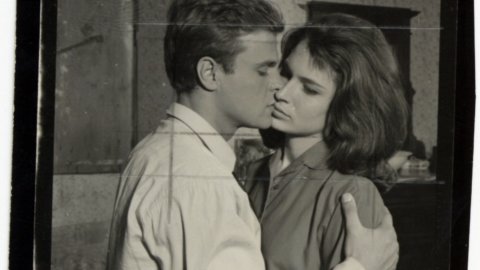On the occasion of the XIII edition of European Photography in Reggio Emilia, Spazio Gerra hosts an exhibition dedicated to the history of the Photo Novel from 20 April to 19 July 2018. The exhibition, curated by ICS - Innovazione Cultura Società, will retrace over three decades of this mass cultural phenomenon, halfway between cinema, comics, photography and appendix novel, which represented one of the many small silent "revolutions" but which, for the frivolity and apparent sentimental naivety he expressed, he was generally underestimated by cultural historians and by the intellectual world.
Over time, however, it has been understood that the photo novel has in its own way contributed in an incisive way to accelerating the literacy process in our country, making millions of Italians dream, who from week to week dedicated themselves to reading passionate and overwhelming sentimental stories.
If read in the social and historical context of the time, it is a genre that has punctually photographed the customs and society of our country, accompanying the difficult path of emancipation of Italian women: from post-war stories with a neo-realist setting, to the representation of the 50s conformist women who wanted women to be queen of the hearth again, up to sexual liberation and the laws that allowed women to gain decision-making power over their own bodies.
Cesare Zavattini understood this right away, experimenting with this tool as a subject writer and contributing to its birth by collaborating with Mondadori for the Bolero Film magazine, entirely dedicated to the "comic novel".
Derided by cultural circles, underestimated in its communicative potential, for Zavattini the photo-novel still remained in the 70s a form of language which he defined as the "instinctive avant-garde", a sort of "new culture" which arises from the "needs of the masses which impose a new interpretation of the world […] in antithesis with what was the monopoly of a group”.
The fortune of the photo novel ended in the eighties, defeated by the power of television which proposed a new product such as soap operas and, later, reality shows, remaining as a residual genre within very few tabloid magazines and for an audience of readers aged over 60 on average.
The exhibition itinerary is made up of a historical-documentary part and of an ad hoc created production.
The first includes photographs, cinematographs and materials from various public and private archives, such as the Cesare Zavattini Archive of the Panizzi Library in Reggio Emilia, the Arnoldo and Alberto Mondadori Foundation, the Historical Photographic Archive of the Superintendency for Cultural Heritage of Trento , the Istituto Luce, to illustrate the evolution of this genre both from the point of view of language and as a thermometer of social changes.
The production, on the other hand, draws inspiration from a subject for a photo novel written in 1961 by Cesare Zavattini, under the pseudonym Cesare Altieri, which was taken as the starting point for La guilt, a photo novel released in 1962-63 in installments on Bolero Film. The new production for Fotografia Europea revisits it through a serialized sequel entitled No fault, set in the present and designed for social networks, especially for Instagram. Millions of users who populate social networks dedicate themselves daily to a storytelling exercise in which images are combined with narratives, in an attempt to tell stories and micro-stories of all kinds, immersed in the daily life of work and family, in sentimental affairs and in the days of holidays, almost unconsciously taking up that Zavattinian concept of "instinctive avant-garde".
The social project will see the story spread daily for an entire month, like a modern feuilleton. The public will thus be able to dialogue with the narration and help determine its ending. At the same time, inside Spazio Gerra the visitor will be able to find an installation that re-proposes some materials of the production in an exhibition key. The screenplay is by Matteo Casali, the photography by three young Emilia-Romagna authors, Nicolò Maltoni, Valentina Cafarotti and Federico Landi.
Photo story and then…
Reggio Emilia, Spazio Gerra (Piazza XXV Aprile)
April 20 - July 19, 2018
Image from A restless girl, published on no. 797 by Bolero Film, 1962 © Arnoldo Mondadori publisher





